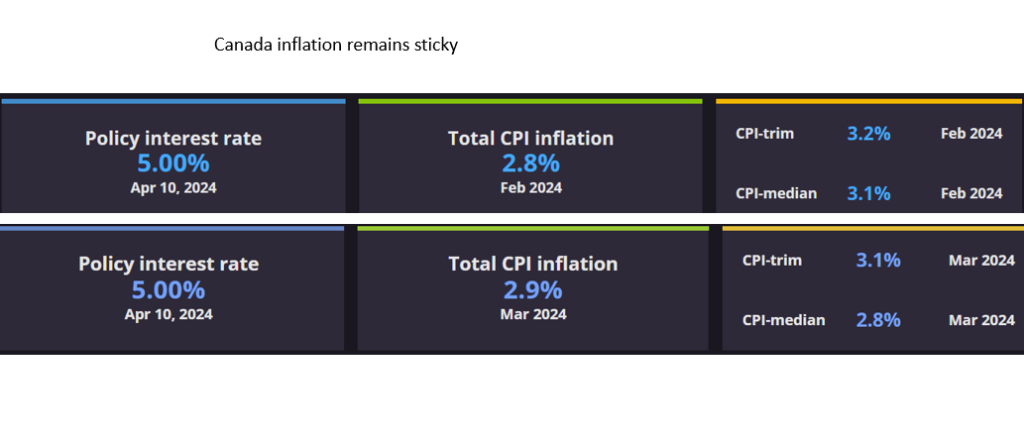
By Michael O’Neill
Sunshine, lollipops, and rainbows. Everything that’s wonderful is sure to come your way. Those words aptly sum up the 420-page Canadian budget doorstop, that reads like the fairy tale it is.
The theme of this years budget is a “Made in Canada Plan” which is Liberal-speak for “impoverishing future generations to secure votes today.”
Another Day Older and Deeper in Debt
The federal government is planning $53 billion in new spending, with substantial allocations directed towards infrastructure development, affordable housing, and enhancements to the social safety net. Notably, approximately $10 billion is earmarked for housing initiatives aimed at increasing supply and affordability through measures such as cutting red tape and utilizing public lands for development. Furthermore, the social safety nets are strengthened by expanding programs like the $10-a-day child care, alongside new programs to assist with dental and pharmaceutical costs. There was even $42 million for the CBC to encourage them to extol the virtues of the budget.
The government was particularly proud of the carbon tax program. She said carbon tax rebates deliver hundreds of dollars to Canadians every three months although the Parliamentary Budget Office says even after the rebates, Canadian families are still down $710.00 per year.
“Making Life Cost Less is Costly”
Ms Freeland framed the initiatives saying, “We are making life cost less.” Why, because $22 billion of the new spending will be paid by tax increases on “the wealthiest.” Hmm, somehow taking money out of the hands of the people who create the most jobs doesn’t sound like a winning strategy for making life cost less and it certainly doesn’t address Canada’s poor productivity problem. Just over three weeks ago, Bank of Canada Deputy Governor Carolyn Rogers addressed that very issue. She noted that although Canada’s labour productivity eked out a small gain at the end of last year, it only happened after six straight quarters of falling productivity. Raising taxes on the very people that create the myriad of small businesses which increases productivity seems counter-productive. Furthermore the government has collected $22 billion in federal carbon taxes since they were implemented in 2017 and small businesses pay the bulk of that tax. That’s $22 billion not being reinvested in plants, equipment, technology, or personnel, and those businesses are passing along the cost to the consumer.
Austerity is not Prosperity
Ms Freeland spoke about austerity. She’s not a fan. She said, “Let’s be honest about what austerity and shrinking the state would mean for Canadians: It means you’re on your own. It means no one will give you a hand when you falter—and that you are choosing to turn your back on the friend or neighbor who has not been as lucky as you. That is not the Canadian way—we take care of each other.” She misspoke; she must have meant to say, “our grandkids and great-grandkids will need to take care of each other,” because that’s who will be paying for these programs.
Fun with Figures
Freeland crowed about Canada having the lowest debt and net debt-to-GDP ratio in the G-7. The numbers may have been calculated by former employees of Bernie Madoff. The Fraser Institute says its “a very different assessment of Canada’s comparative indebtedness occurs if gross debt statistics are used, as evident in the following chart.”

The 2024-2025 budget meets the textbook definition of fiscal stimulus and if the Bank of Canada follows through on its hint of a June rate cut, that won’t be good for the Canadian dollar.
BoC Governor Tiff Macklem was rather optimistic during the April 10 monetary policy meeting. In his MPR opening statement he said, “Looking ahead, we expect core inflation to continue to ease gradually. The more timely three-month rates of core inflation fell below 3% in February, suggesting some downward momentum. When he was asked by a reporter if a June rate cut was possible, he responded “Yes.”
Inflation Frustration
But inflation is sending mixed messages. Headline CPI increased from 2.8% in February to 2.9% in March, while the BoC ‘s preferred metrics, CPI Trim and CPI Median were lower. CPI Trim saw a modest decrease, indicating that more extreme price changes are stabilizing, whereas the CPI Median fell more significantly, suggesting that the broader inflationary pressures might be easing.

Source: Bank of Canada
FED and Oil dilemma
The Bank of Canada may be poised to cut rates, but Jerome Powell and the Federal Reserve are not in any hurry. Mr Powell said as much on April 16. He pointed out that US inflation is not falling as fast as expected, noting that the downtrend was disrupted, which suggests it will take longer to achieve confidence that inflation will reach its target.
The risk that Canada and US interest rate differentials will widen further will limit Canadian dollar gains.
Even worse, gas prices in Ontario and British Columbia are starting to soar and could rise another 10-15 cents /liter in the next few days. Supply and demand is one factor but so is the made in Canada carbon tax. It is also very inflationary. The BoC may ignore a one or two month rise in inflation because of energy prices but if it lasts, any rate cuts will be reversed.
The combination of the stimulus budget and widening CAD/US interest rate spreads suggests, USDCAD is likely to test 1.4100, while prices are above 1.3650.
It may be all sunshine and unicorns out there, but only for Canadian dollar bears.





